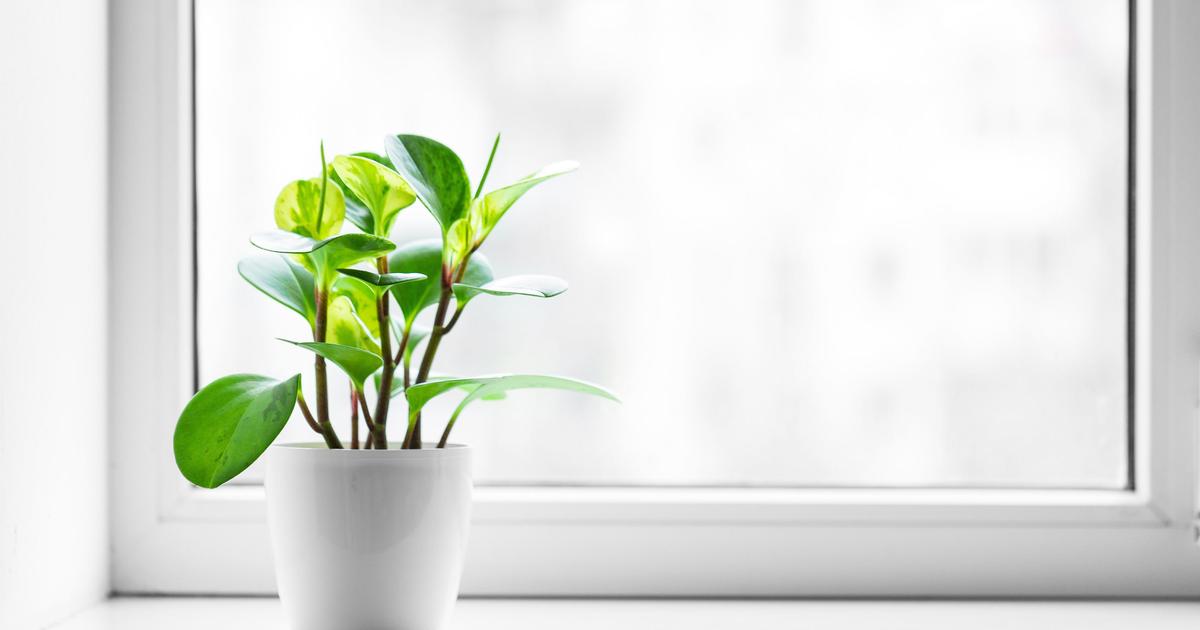Light for healthy plants.
Discover our tips for them to flourish in your home.
To discover
January: what vegetables and fruits are in season?
Why should you light your plants in winter?
Whatever the season, green plants need light - ultraviolet (UV) rays -, one of the fundamental elements of photosynthesis, necessary for their life and growth.
For the record, through this process they synthesize organic matter using light energy, by absorbing carbon dioxide from the air and releasing oxygen.
In winter, when the sun sets earlier and the days are shorter and less bright, it is sometimes essential to give a helping hand so that the daily quota of light hours is reached.
Without sufficient light exposure, the plant's growth will initially slow and then stop.
As a result, it will lose its intense green color, tend towards pale yellow and ultimately die.
Also read: How to brighten up a dark room?
What lighting to choose for indoor plants?
Natural lighting
Unlike their counterparts planted outdoors which benefit from direct sunlight, indoor plants are forced to acclimatize to the environment in which they are installed.
It is therefore advisable to position them not far from a source of natural light, that is to say a window, an opening, a skylight.
For even lighting, remember to regularly rotate the plant and its container, so that the leaves in the background are not damaged.
In winter, for more light, you can remove the curtains from the window, if the opposite is not too close.
In summer, however, if your home faces south, west or southwest, be sure to move the plant slightly away from the direct light source to prevent it from burning.
To know
Ask your florist about the requirements depending on the species chosen because some plants need a lot of light and others prefer shade or somewhere in between.
Artificial lighting
If the walls behind the plant are painted white or light beige, they will have a light reflection effect which is not negligible.
On the other hand, if the plant is in a room without windows, artificial light to illuminate it will be recommended.
Artificial light can also, in certain cases such as in winter, be used to supplement natural light.
For additional lighting, fluorescent lamps or LED bulbs are also effective.
-
Fluorescent lamps
These are horticultural lamps, available in garden centers.
They should be installed 25-30 cm above the plants.
They are often sold with a reflector and a switch.
Depending on the needs of the plant and its stage of development, you will opt for a very specific color.
Blue lights, for example, are suitable for growth periods, while red lights are to be used during flowering.
Depending on the size of the plant you will choose one or more tubes.
These fluorescent lamps have the advantage of heating little and are perfect for small plants.
- LEDS
Low energy consumption, LED lamps also emit little heat and have a longer lifespan.
They offer varied spectrum colors: only blue or red, mixed...
The lamps are placed approximately 20 cm above the plant.
Outdoor lighting helps beautify plants
To magnify your flowerbeds, hedges and other rose bushes, light can be an asset when darkness sets in.
Installing spotlights, street lamps or other lighting fixtures, exterior motion detectors, above or at ground level, allows bushy shrubs, flowers and fruits, or quite simply the shape of the plant, to stand out.
Thanks to this exterior lighting, the garden becomes an extension of the house, day and night.
Read alsoConnected lighting, bright ideas for all budgets
How to properly light a greenhouse?
If you want to build a greenhouse, keep in mind that the best location on land to install it is the one that is sunniest.
If it is an already built greenhouse, there are several solutions to provide more light inside.
Several categories of artificial lights are possible, starting with LED lamps, known for their low electricity consumption but of certain efficiency.
Fluorescent tubes, like long neon lights, are also an option to consider.
High pressure sodium lamps are recommended if your greenhouse contains plants that will produce flowers and/or fruits.
If you install a large number of lights, it is however recommended to inspect the condition of the plants to check that the brightness is not too high and does not cause the opposite effect by damaging them.
Good to know
Remember to adapt the watering of the plants and the ventilation of the greenhouse to the heat given off by artificial lighting.

